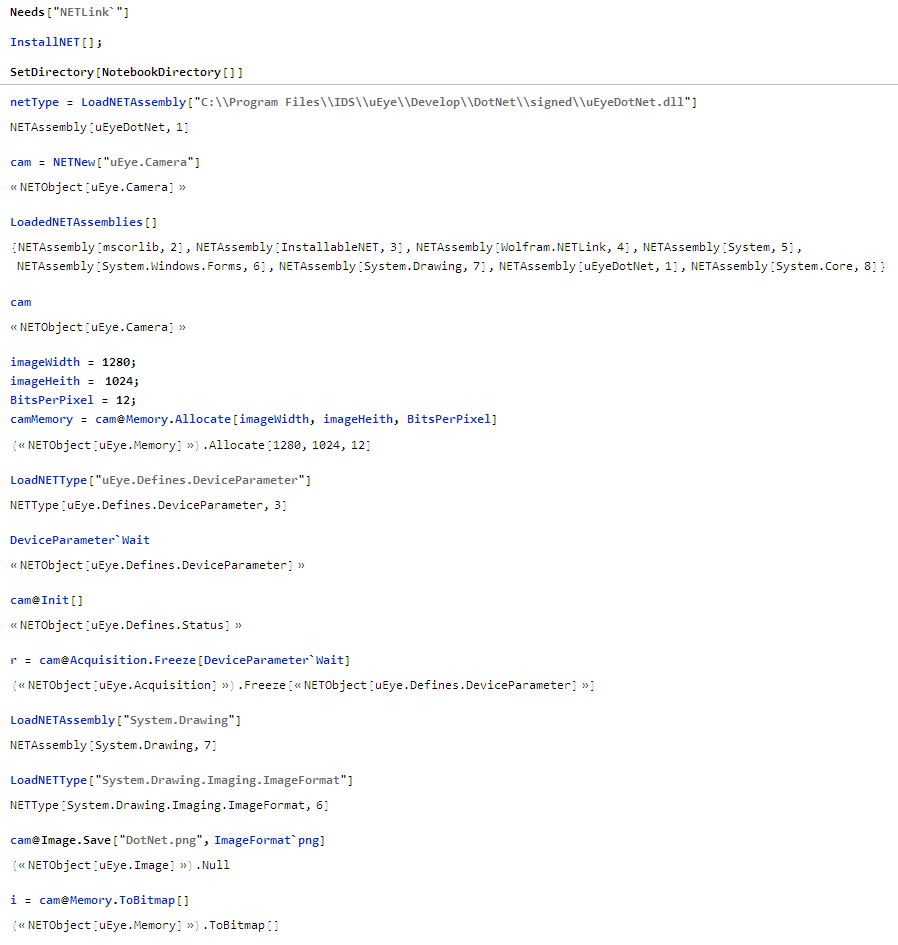I previously asked a question about accessing a GigE camera from within Mathematica using DeviceOpen[Camera]. Since I have not been able to figure out why this crashes the kernel I am trying to use the camera's .Net interface. I think I am close to figuring this out, but I clearly do not understand the syntax completely.
The camera I am using is a uEye UI-624xSE-C. The manual for the .Net interface to the camera has this in the getting started quickly section: Setting-up the IDE
1.Copy the uEyeDotNet.dll file into your project directory.
2.Open your project in Visual Studio.
3.In the "Solution Explorer" right-click on the "References" entry.
4.Select "Add reference". A dialog for adding references opens.
5.Open the "Browse" tab.
6.Select the uEyeDotNet.dll.
7.Click on "OK".
8.Open the project properties via the "Project > Properties" menu entry.
9.In the "Application" tab set the target framework to ".NET Framework 3.5".
Using the .NET interface
1.Create a uEye .NET object, e.g. uEye.Camera cam = new uEye.Camera();
2.Now you can start working with the .NET interface.
Capturing the first image 1.Initialize the camera: cam.Init();
2.Allocate an default image memory: cam.Memory.Allocate(out s32MemId); You can also allocate an image memory by using: cam.Memory.Allocate();
3.Capture a live image with cam.Acquisition.Capture(s32Wait); or a single image with cam.Acquisition.Freeze(s32Wait); With s32Wait = uEye.Defines.DeviceParameter.Wait the image acquisition waits until an image is captured and returns afterwards. With s32Wait = uEye.Defines.DeviceParameter.DontWait the image acquisition returns immediately.
4.Display the image on the screen: cam.Display.Render(uEye.Defines.DisplayRenderMode mode) mode selects different rendering modes, e.g. mode = uEye.Defines.DisplayRenderMode.FitToWindow.
My notebook is attached
My Code & Output:

 Attachments:
Attachments: